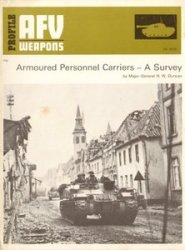Montgomery’s main task now was to push through to Liibeck and cut off the German forces occupying Norway and Denmark. He put the more energy and dispatch into the task knowing that its accomplishment would bring supplementary benefits:
"With the Rhine behind us we drove
Hard for the Baltic. My object was to get there in time to be able to offer a firm front to the Russian endeavours to get up into Denmark, and thus control the entrance to the Baltic.”
For this purpose, he disposed of the British 2nd Army and the Canadian 1st Army, comprising five corps of 16 divisions (six of them armoured). Before him in Holland he found the German 25th Army, of which General von Blumen-tritt had just assumed command, and the debris of the 1st Parachute Army. This debilitated force had been put under the overall command of Field-Marshal Busch, who had been placed at the head of a Northern Defence Zone, to include the Netherlands, north-west Germany, Denmark, and Norway. Weakness in numbers and materiel was, however, to some extent offset by the fact that tracts of
V Stuttgart Cathedral, heavily damaged but still standing amidst the ruins of the rest of the city on March 31, 1945.
Bog and the otherwise marshy nature of the ground kept the tanks to the main roads.
Having captured Munster, the key to Westphalia, General Dempsey, commanding the British 2nd Army, pushed forward his XXX Corps in the direction of Bremen, XII Corps towards Hamburg, and VIII Corps towards Liibeck.
On the right, VIII Corps (Lieutenant-General Sir Evelyn H. Barker) was momentarily delayed by the "Clause-witz” Panzer Division’s counter-attack which, as has been mentioned above, was aimed at the point of contact of the 21st and 12th Army Groups. Nonetheless, VIII Corps reached the Elbe opposite Lauenburg on April 19. Here, Montgomery, anxious to move with all possible speed, requested support from Eisenhower and was given the U. S. XVIII
Airborne Corps (8th Division, 5th and 7th Armoured Divisions, and the U. S. 82nd Airborne and British 6th Airborne Divisions). On April 29-30, British and Americans under cover provided by the first R. A.F. jet fighters, (jloster Meteors, forced the Elbe. On May 2,11th Armoured Division (Major-General Roberts), which was the spearhead of the British VIII Corps, occupied Liibeck and the 6th Airborne Division entered Wismar, 28 miles further east, six hours ahead of Marshal Rokossovsky’s leading patrols.




 World History
World History









